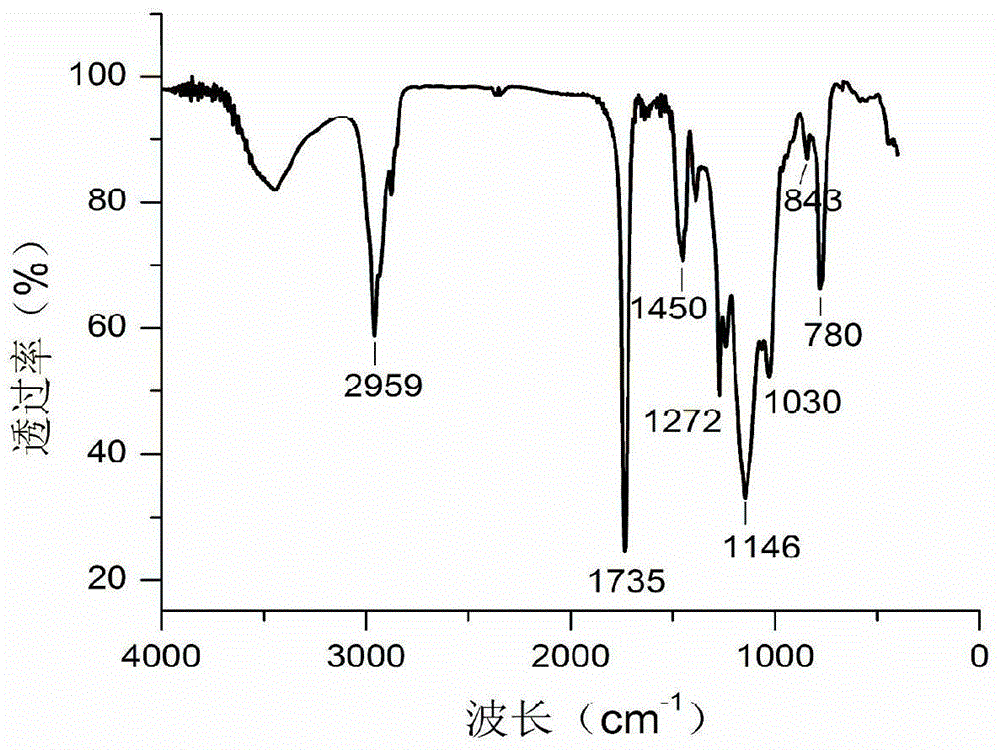The preparation method of silicone acrylic miniemulsion
A technology of micro-emulsion and silicon-acrylic micro-emulsion, which is applied in the field of preparation of silicon-acrylic micro-emulsion, can solve the problems of high price, limit the comprehensive performance of polyacrylate emulsion, and restrict the content of organic silicon in silicon-acrylic micro-emulsion, so as to improve the compatibility Effect
- Summary
- Abstract
- Description
- Claims
- Application Information
AI Technical Summary
Problems solved by technology
Method used
Image
Examples
Embodiment 1
[0044] (1) Methyl methacrylate (MMA), butyl acrylate (BA), methyltrimethoxysilane (MTMS) and 3-(methacryloyloxy)propyltrimethoxysilane (MEMO) according to mole Ratio 2:1:0.92:0.08 and 2wt.% (the mass fraction is based on the total mass of the monomer, the same below) hexadecane was added to a single-necked flask equipped with magnetic stirring, and stirred for more than 1 hour to completely dissolve the stabilizer , becoming an oil phase mixture;
[0045] (2) Add 2.1wt.% sodium dodecyl sulfate (SDS) and 1.4wt.% OP-10 together with deionized water whose mass is 1.5 times the total mass of monomers into a four-necked flask equipped with magnetic stirring , stirred for more than 1 hour to become an aqueous phase mixture;
[0046] (3) The oil phase mixture is gradually added dropwise to the water phase mixture, and the hydrolysis reaction of the organic silicon and the emulsification process of the whole mixture are carried out simultaneously at 30° C., and the hydrolysis and emu...
Embodiment 2
[0051] (1) Methyl methacrylate (MMA), butyl acrylate (BA), methyltrimethoxysilane (MTMS) and 3-(methacryloyloxy)propyltrimethoxysilane (MEMO) according to mole Ratio 2:1:0.92:0.08 with 1wt.% hexadecane and 1wt.% methyl methacrylate-n-butyl acrylate-siloxane random copolymer (Mn=3000g / mol, PDI=1.11, MMA: BA (mol)=2:1, 3-(methacryloyloxy)propyltrimethoxysilane content is 20mol%) were added together into a single-necked flask equipped with magnetic stirring, and stirred for more than 1 hour to make the stabilizer completely dissolve and become an oil phase mixture;
[0052] (2) Add 2.1wt.% sodium dodecyl sulfate (SDS) and 1.4wt.% OP-10 together with deionized water whose mass is 1.2 times the total mass of monomers into a four-necked flask equipped with magnetic stirring , stirred for more than 1 hour to become an aqueous phase mixture;
[0053] (3) The oil phase mixture is gradually added dropwise to the water phase mixture, and the hydrolysis reaction of the organic silicon a...
Embodiment 3
[0058] (1) Methyl methacrylate (MMA), butyl acrylate (BA), methyltriethoxysilane (MTES) and 3-(methacryloyloxy)propyltrimethoxysilane (MEMO) according to Molar ratio 2:1:0.71:0.08 with 1wt.% hexadecane and 1wt.% methyl methacrylate-n-butyl acrylate-siloxane random copolymer (Mn=3000g / mol, PDI=1.11, MMA : BA (mol) = 2: 1, 3-(methacryloyloxy) propyltrimethoxysilane content is 20mol%) add together in the one-necked flask equipped with magnetic stirring, stir more than 1 hour, make stabilizer Dissolve completely and become an oil phase mixture;
[0059] (2) Add 2.1wt.% sodium dodecyl sulfate (SDS) and 1.4wt.% OP-10 together with deionized water whose mass is 1.2 times the total mass of monomers into a four-necked flask equipped with magnetic stirring , stirred for more than 1 hour to become an aqueous phase mixture;
[0060] (3) The oil phase mixture is gradually added dropwise to the water phase mixture, and the hydrolysis reaction of the organosilicon and the emulsification pr...
PUM
 Login to View More
Login to View More Abstract
Description
Claims
Application Information
 Login to View More
Login to View More - R&D
- Intellectual Property
- Life Sciences
- Materials
- Tech Scout
- Unparalleled Data Quality
- Higher Quality Content
- 60% Fewer Hallucinations
Browse by: Latest US Patents, China's latest patents, Technical Efficacy Thesaurus, Application Domain, Technology Topic, Popular Technical Reports.
© 2025 PatSnap. All rights reserved.Legal|Privacy policy|Modern Slavery Act Transparency Statement|Sitemap|About US| Contact US: help@patsnap.com



